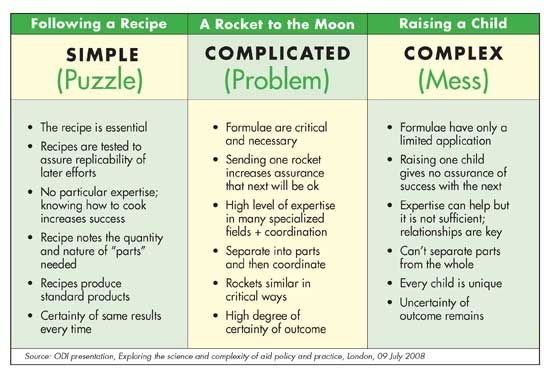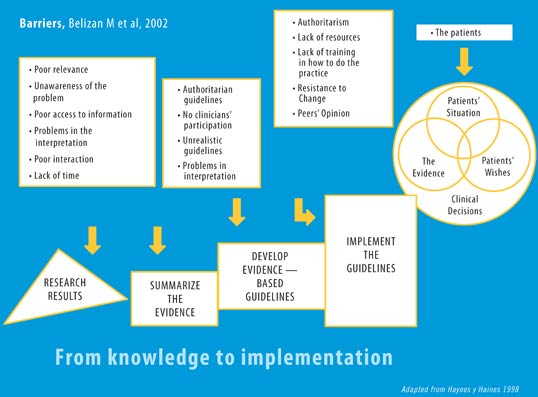Global health experts seek to transform programs through implementation science
April 2010 | Volume 9, Issue 2
By Jeff Gray
Implementation science, or research to translate evidence-based findings into common practice, is quickly becoming an integral component of many global health programs. This novel approach to health research addresses knowledge gaps between innovations such as vaccines, drugs and care strategies and their delivery to patients and communities. Studies continue to show, for example, that the risk of HIV transmission can be reduced through condom use, yet infection rates continue to rise in some regions of the world. Research on implementation identifies barriers to proven interventions and facilitates the creation of local strategies to overcome them.
The concept of translating research into practice and policy was discussed in-depth at a recent two-day implementation and dissemination conference sponsored by NIH and a subsequent Fogarty satellite meeting focused on implementation science in the global health context. "It's an area ripe for exploration," said NIH Director Dr. Francis Collins. "Implementation science is part of our mission." Collins says it's important to ensure that research reaches communities in need, as well as conducting research to determine what works and what doesn't in the real world.
The NIH conference, now in its third year, drew approximately 630 attendees and focused on methods and measures. Over 50 presenters showcased research and health care delivery projects addressing a wide range of issues, including war-related trauma, stroke care, community mental health, homelessness, STD prevention, family planning and school-based interventions.
"Research must combine relevance to decision-making," said Dr. Julio Frenk, Dean of the Harvard School of Public Health, drawing from his experiences establishing highly successful, large-scale health programs in his native Mexico. "Excellence and relevance can have a fruitful relationship through knowledge translation."
Implementation science is of particular importance to global health as the concept addresses hard questions such as how best to translate new findings into practice in different cultural settings, how to reduce the fragmenting of health systems into programs centered on a single disease - particularly in low-resource settings - and why health interventions lose efficacy over time or sometimes display unintended effects.
Lynn Freedman, professor of clinical population and family health at Columbia University, warned of an additional challenge, namely, the "dangerous fallacy" that technical input, political will and money will amount to functioning services. She used the analogy (see Figure 1: Chart of Problems with Varying Levels of Complexity) of following a recipe, launching a rocket to the moon and raising a child as three problems with different levels of complexity. Implementation science falls into the most challenging category.
Often a collaborative process involving experts from a wide range of disciplines, implementation research in the global health field has helped clinicians to identify and solve such problems more quickly, while improving the performance of programs using scientifically valid methods. It has also assisted program managers and policymakers to make decisions based on evidence instead of assumptions and has even helped managers and staff at health facilities better understand how their own programs work.
"Effective program implementation must be multidisciplinary," said Fogarty Director Dr. Roger I. Glass. "We need to think with an open mind how to make these programs work. We've seen lots of money for activities, but our programs are not as effective as they could be. In every realm of interventions, we have lots of knowledge that isn't applied."
Argentinian scientist Dr. Jose Belizan echoed the sentiment. He encountered numerous obstacles while studying ways to improve birth practices. These barriers included lack of awareness of the problem, poor access to information, authoritarian guidelines, difficulty getting clinicians to participate, interpretation problems, lack of resources and training and resistance to change. (See Figure 2: Flow Chart of Barriers to Improve Birth Practices.)
Other presenters cited cultural barriers such as stigma and taboos related to mental health in China, fetal alcohol syndrome in Russia (see related article Researchers tackle fetal alcohol syndrome in Russia) and maternal mortality in Nigeria (see related article Fogarty grantees reducing maternal deaths in Nigeria).
Several Fogarty programs are helping researchers address some of these obstacles through research and training efforts in low-and middle-income countries. Through its Framework Programs for Global Health, Fogarty is supporting grantees' efforts to develop implementation science curricula by bringing together multiple schools and disciplines at research universities with global health programs.
In addition, its International Clinical, Operational and Health Services Research and Training Award program supports implementation science and related research focused on chronic, non-communicable diseases and disorders as well as infectious diseases such as AIDS, TB and malaria. The program also helps to identify skills needed to design effective interventions that can be scaled up to entire health care systems and populations in need.
Finally, a new program, the Medical Education Partnership Initiative, will operate in sub-Saharan Africa in collaboration with the President's Emergency Plan for AIDS Relief - known as PEPFAR - to bolster HIV/AIDS interventions by expanding the ranks of well-trained clinicians, building the capacity of local scientists and health care workers to conduct multidisciplinary research and increasing retention of clinical professors and faculty at medical schools.
More Information
Figure 1: Chart of Problems with Varying Levels of Complexity
Global health experts sometimes mistakenly view implementation science problems as complicated rather than complex.

Source: ODI presentation, Exploring the science and complexity of aid policy and practice, London, 09 July 2008
Text Description of Chart:
Chart contains three columns, each demonstrates a type of problem.
Column 1 - Following a Recipe - Simple (Puzzle): The recipe is essential; Recipes are tested to assure replicability of later efforts; No particular expertise; knowing how to cook increases success; Recipe notes the quantity and nature of "parts" needed; Recipes produce standard products; Certainty of same results every time.
Column 2 - A Rocket to the Moon - Complicated (Problem): Formulae are critical and necessary; Sending one rocket increases assurance that next will be ok; High level of expertise in many specialized fields + coordination; Separate into parts and then coordinate; Rockets similar in critical ways; High degree of certainty of outcome.
Column 3 - Raising a Child - Complex (Mess): Formulae have only a limited application; Raising one child gives no assurance of success with the next; Expertise can help but it is not sufficient; relationships are key; Can't separate parts from the whole; Every child is unique; Uncertainty of outcome remains.
Figure 2: Flow Chart of Barriers to Improve Birth Practices
Fogarty grantee Dr. Jose Belizan identified numerous institutional barriers he faced while conducting a study on birth practices in Argentina.

Adapted from Haynes y Haines 1998
Text Description of Flow Chart:
Flow chart demonstrates Barriers to Improve Birth Practices
First box contains bullets: Poor relevance; Unawareness of the problem; Poor access to information; Problems in the interpretation; Poor interaction; Lack of time
Second box contains bullets: Authoritarian guidelines; No clinicians' participation; Unrealistic guidelines; Problems in interpretation
Third box contains bullets: Authoritarism; Lack of resources; Lack of training in how to do the practice; Resistance to Change; Peers' Opinion
Box with "The Patients" on the far right-hand side points with an arrow to a larger circle, labeled Clinical Decisions, which fully contains three overlapping circles: Patients' Situation, The Evidence, Patients' Wishes
Beneath these four boxes, arrows point to the following outcomes: Research Results; Summarize the Evidence; Develop Evidence-based Guidelines; Implement the Guidelines
To view Adobe PDF files,
download current, free accessible plug-ins from Adobe's website.